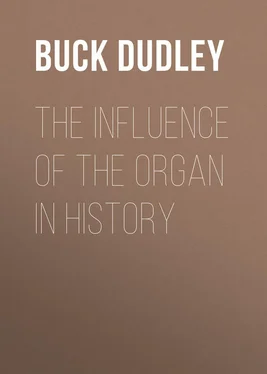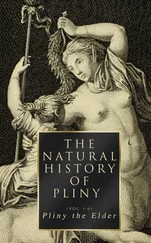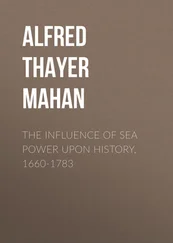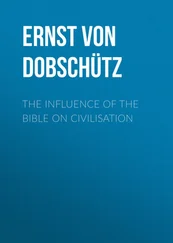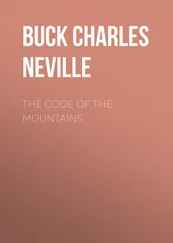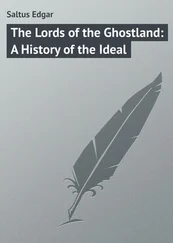Dudley Buck - The Influence of the Organ in History
Здесь есть возможность читать онлайн «Dudley Buck - The Influence of the Organ in History» — ознакомительный отрывок электронной книги совершенно бесплатно, а после прочтения отрывка купить полную версию. В некоторых случаях можно слушать аудио, скачать через торрент в формате fb2 и присутствует краткое содержание. Жанр: foreign_antique, foreign_prose, Историческая проза, на английском языке. Описание произведения, (предисловие) а так же отзывы посетителей доступны на портале библиотеки ЛибКат.
- Название:The Influence of the Organ in History
- Автор:
- Жанр:
- Год:неизвестен
- ISBN:нет данных
- Рейтинг книги:4 / 5. Голосов: 1
-
Избранное:Добавить в избранное
- Отзывы:
-
Ваша оценка:
- 80
- 1
- 2
- 3
- 4
- 5
The Influence of the Organ in History: краткое содержание, описание и аннотация
Предлагаем к чтению аннотацию, описание, краткое содержание или предисловие (зависит от того, что написал сам автор книги «The Influence of the Organ in History»). Если вы не нашли необходимую информацию о книге — напишите в комментариях, мы постараемся отыскать её.
The Influence of the Organ in History — читать онлайн ознакомительный отрывок
Ниже представлен текст книги, разбитый по страницам. Система сохранения места последней прочитанной страницы, позволяет с удобством читать онлайн бесплатно книгу «The Influence of the Organ in History», без необходимости каждый раз заново искать на чём Вы остановились. Поставьте закладку, и сможете в любой момент перейти на страницу, на которой закончили чтение.
Интервал:
Закладка:
Mr. Pepys' heart was evidently in the right place, and the thought of having the church provide a fund for the proper tuning and repair of the organ, not only sensible, but, to quote his own words, "a mighty pretty" idea.
The invention of the pedal key-board, that most important and characteristic part of the organ, seems to have occurred about the beginning of the fourteenth century. There is no reliable account of who first made this addition, it being claimed by various parties. The sixteenth century was the period when the arts of sculpture, painting, and architecture had gained what might almost be termed a modern artistic polish, in not a few instances, indeed, surpassing all that the moderns have accomplished. The early school of church painters had become modified. Grace and relative refinement had largely taken the place of the early stiffness of design and execution, and in sculpture and architecture were witnessed many of the results which are still the wonder of the world. With this refinement came a taste for luxury and a love of ornament which in the seventeenth and early part of the eighteenth century had extended to and affected organ-building, at least externally.
Seidel, in his work on the organ, gives this excellent account of the tendency referred to: —
"At this time, great industry and expense was bestowed upon the external decoration of the organ. The entire case was ornamented with statues, heads of angels, vases, foliage, and even figures of animals. Sometimes the front pipes were painted with grotesque figures, and the lips of the pipes made to resemble lions' jaws. They went further, and threw away the money, which might have been expended in a worthier manner, on the display of the most tasteless and absurd tricks of art, degrading thereby – doubtless unintentionally – a noble instrument, intended for sacred purposes, into a raree-show . Among these ornaments, the figures of angels played a very conspicuous part; trumpets were placed in their hands, which by means of mechanism could be moved to and from the mouth. Carillons (bells) too, and kettle-drums, were performed upon by the movable arms of angels." (Think of an angel playing upon a kettle-drum!). "In the midst of this heavenly host, sometimes a gigantic angel would be exhibited hovering in a 'glory' over the organ, beating time with his bâton as conductor of this super-earthly orchestra!
"Under such circumstances, the firmament, of course, could not be dispensed with. So we had wandering suns and moons, and jingling stars in motion. Even the animal kingdom was summoned to activity. Cuckoos, nightingales, and every species of bird, singing, or rather chirping, glorified the festival of Christmas, and announced to the assembled congregation the birth of the Redeemer. Eagles flapped their wings, or flew towards an artificial sun. The climax, however, of all these rarities, was the fox-tail . It was intended to frighten away from the organ all such inquisitive persons as had no business near it. Thus, when they pulled out this draw-stop, suddenly a large fox-tail flew into their faces! It is clear that by such absurd practices, curiosity was much rather excited than stopped, and that all this host of moving figures, and their ridiculous jingling, disturbed meditation, excited the curiosity of the congregation, and thus disparaged the sublimity of divine service."
Of course all this nonsense in due time brought its own cure with it. The money expended was diverted towards its worthy and legitimate object, and to-day, in Europe, but few such relics of the past can be found, and those generally in out-of-the-way places. I have myself seen but one organ containing any of these absurdities. That was in a small town of Camin, on the Baltic sea-coast of North Prussia, and I was informed by the old organist (as Seidel says) that these things were reserved for Christmas and Easter !
While the power, compass, and variety of organ tone, as well as the mechanism of the instrument, made steady progress throughout the fifteenth and sixteenth centuries, the science of harmony in the largest sense kept even pace with it, and, perhaps, received even a greater relative development. Meantime, the orchestral instruments of the day had received a fair share of improvement. The harpsichord had been invented, and sufficiently perfected to be worthy of the powers of such a master as Sebastian Bach. With the appearance of this great man the art of counterpoint reached its culmination, never surpassed, if even equalled in isolated instances, by any subsequent writer. His organ compositions cover every resource, both in design and execution, possible to the organ of his day; and yet, I do not think it too much to say that, had Bach never written a single organ piece, his claims for recognition as a great composer would remain substantially the same. His greatest works are to be found among his vocal and orchestral writings. Let us examine for a moment the reason for this, and of the influence of the "king of instruments" upon musical composition at this time.
We have seen that contrapuntal treatment, so-called, owed its origin to the nature of the organ. Vocal music, at the time of which we speak, felt the same influence and followed the same form. Now, if we open one of the vocal and orchestral scores of Bach, we shall see that while he gives the instruments more freedom than his predecessors, in consequence of their largely increased powers and the proportional increased ability of the executants of his day, yet the contrapuntal influence is everywhere visible. It was the period of strict form. As we count back such cycles, it was but a relatively short time since music had been "without form, and void; and darkness was upon the face of the deep," artistically speaking. Music was a serious matter. They revelled in fugue, and even danced contrapuntally. Although not a direct influence, perhaps, is not this state of things, after all, a sufficient proof of the absolutism of the organ in a derived manner, – the regal sway of the king of instruments at this period? Bach breathed new life into these dry and purely scientific forms, and it is his greatest glory that in many, if not all, of his profoundest works, his genius enabled him to unite the emotional and æsthetic element with the purely intellectual and scientific.
While the improvement of the organ, as respects both tone, mechanism and general capabilities, continued, and still continues at the present day, it is noteworthy that from the time of Bach, of all others, the influence of the organ upon music at large began to diminish. From this point we have to consider the decline of this influence, showing that music began to emancipate itself, each instrument claiming and receiving its own especial rights and treatment, long before a similar dawn of liberty began in the political world. Two reasons conduced to this change.
First, the requirements of music, which found no prototype in the organ of that day. As the instruments were then built, they possessed but little variety of tone, the swelling or diminishing of which was an impossibility; nor had the organist any mechanical assistance whatever to enable him to vary the combinations of stops.
Second, the invention of the harpsichord. This instrument, the avant-courier of the pianoforte, to which we have already referred, had already become sufficiently popular to make its own peculiar influence felt. This consisted in the power of crescendo and diminuendo according to the force exerted by the player, and a light touch which offered no impediment to rapid execution, besides certain other effects through its characteristic tone impossible upon the organ.
The light touch of the harpsichord, as compared with the heavy and fatiguing action of the organs of that day, was necessarily a source of great attraction; and the instrument itself, although far from finding a home in every household, as the piano has in our time, yet possessed the merit of being portable.
Читать дальшеИнтервал:
Закладка:
Похожие книги на «The Influence of the Organ in History»
Представляем Вашему вниманию похожие книги на «The Influence of the Organ in History» списком для выбора. Мы отобрали схожую по названию и смыслу литературу в надежде предоставить читателям больше вариантов отыскать новые, интересные, ещё непрочитанные произведения.
Обсуждение, отзывы о книге «The Influence of the Organ in History» и просто собственные мнения читателей. Оставьте ваши комментарии, напишите, что Вы думаете о произведении, его смысле или главных героях. Укажите что конкретно понравилось, а что нет, и почему Вы так считаете.
